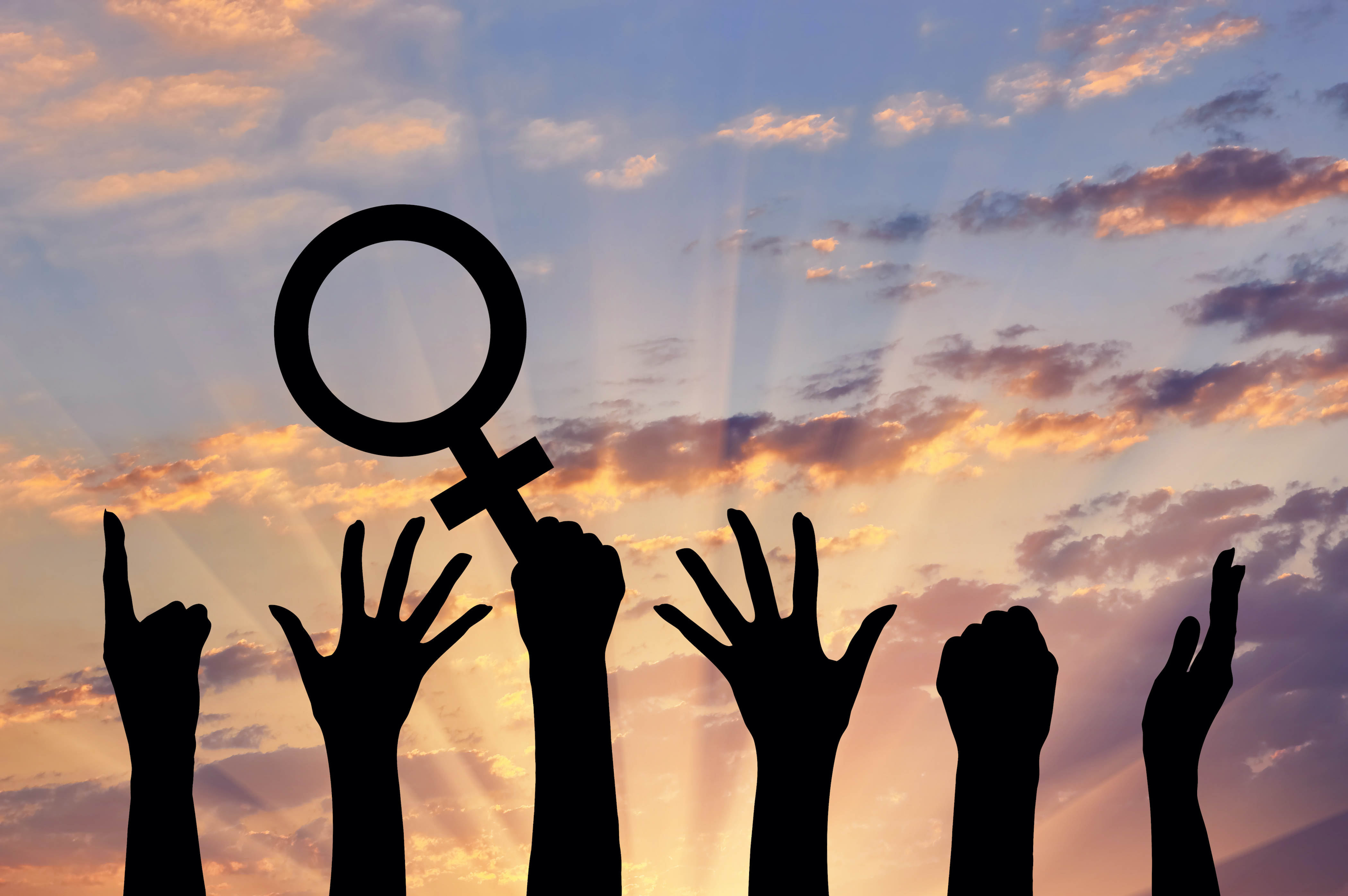Now, when the earlier child is sent off to not have incest with the new baby and not to murder the new baby and to form a new group, he/she takes their bisexuality as a subject position with him/her. She is a little girl or little boy in there, but there isn’t an inequity in that boy and girl who form that new group. Of course, there may be behavioural inequities. Some societies make massively different behavioural distinctions. A little girl must wear pink. A little boy must wear blue, and so on. But there’s no psychological distinction. There’s no sexual difference, as such.
Male hysteria and feminism
Emeritus Professor of Psychoanalysis and Gender Studies
- Male hysteria hasn’t been given the same thought and importance in psychology as female hysteria. Hysteria is universal, yet the history of male hysteria suggests that there has been little or none at all.
- Simone de Beauvoir had this great hope that once women entered the patriarchal world as equals, women’s condition as a second sex would be solved. It hasn’t been. That led me to think about ‘siblinghood’ and ‘horizontal’ relations in the family and the wor
- It’s clear that feminism is now here to stay, changing and growing as a world-wide movement.
The centre of attention
The question about 1968 and the place of feminism in it is one that I find personally amusing. I found myself thinking very much, after Psychoanalysis and Feminism, about male hysteria because the whole claim of psychoanalysis to universality – that we all have this unconscious – is, of course, dependent on us all. It includes men as well as women.
What I got curious about was that everybody was writing books about female hysteria. We got about a hundred and something hits, when I looked it up at one of the American universities that I was working at. But what about male hysteria? As soon as male hysteria was recognised, it seemed to disappear. The long and the short of it was that if you think about it – as I found that Louise Bourgeois, the artist I worked with, thought about it – to be a male hysteric is actually to be a man. A man has to be the centre of attention. To be a female hysteric is to have it as a pathology. Now, that’s a very short statement, but men feel completely at a loss for who they are if they’re not the centre of attention. If all a female wants to be is the centre of attention, it’s pathological.

Photo by Negro Elkha.
Side-to-side relationships
It’s not always about up-down relationships or linear relationships of parents to children, which is what psychoanalysis and the whole notion of the incest taboo or incest prohibition and the murder taboo or murder prohibition are about. These theories always talk about fathers and mothers and children in relation to them. But what about side-to-side relationships? What about siblings?
I started to work on what I would now call “siblinghood”: sisterhood and fraternity, as opposed to patriarchy. Patriarchy is still very much there – I don’t discount any aspect of the importance of patriarchy. But Simone de Beauvoir had this great hope that once women could equally enter the world, namely patriarchy or fratriarchy, then the situation of women as a second sex would be solved.
Fratriarchy and bisexuality
I now work on fratriarchy and I’m not sure that it is solved by it, but it certainly has a potential, this side-to-side relationship of sisters and brothers. It has a potential of bisexuality, which will underlie things like transgender, but I’m talking of bisexuality as a subject position. I don’t mean it in the way we usually use it in popular discourse, as a choice of who you want to have sex with. I mean it as who you are when you wake up in the morning and you’re thinking about that work of art you’re going to paint or when you’re thinking about making tea for people. As a subject, you’re quite bisexual.
Incest, murder and fratriarchy
I think it’s important to realise that incest and murder on a linear vertical axis is not the same as incest and murder on a lateral axis. If we want to murder our sister or our brother, or if we want to have incest with our sister or our brother, that is actually different from wanting to have incest with, or murder, our parents.
We’re born into two structures in the world. We’re born into a social structure and we’re born into a family structure. Psychoanalysis only deals with the family structure. My question is, what about using psychoanalysis as a feminist for the lateral horizontal axis? When does that really start to become important?
My next work will look at that horizontal axis within psychoanalysis, and think of the patient analyst as brother and sister, sister and sister, brother and brother, whatever it might be, as well as parent and child. We have to think of all our relationships as being earlier than the start of the Oedipus complex; starting when, let’s say, the mother says, you are not to kill my new baby. I love my new baby. You’re not to over-love my new baby. You go and play with your friends. And the child goes off.
The vertical child stays in the family wanting incest with the mother. The horizontal child goes off and makes a new social group with their friends. From that moment onwards, friendships and enemies become all-important for society. That’s what I say is the fratriarchy. Sisterhood and brotherhood are different within the fratriarchy. Brothers have to want to fight. Sisters have to want to marry.
Sexual difference
Sexual difference in psychoanalysis is a very important concept. This is when the two children, the boy and the girl, enter the Oedipus complex. It’s then that sexual difference is established because the girl has her own Oedipus complex, which is not to have an Oedipus complex, basically. She’s meant to want to get the desire of her father, which means that there’s no prohibition. Yet we enter society by prohibition. That’s what makes us human – to be prohibited. So, her constitution as an Other is actually made within the relationship to the Oedipus complex.

Photo by denissovi.
Peer group and latency
Latency is because children and parents aren’t getting on so well. Children don’t want their parents around. They want their friends. They learn that they may substitute a teacher or something for the parent. But the teacher has to be very careful not to be a parent. The teacher may teach, be different or help. The people that children really learn everything with is their peer group. It is their biggest learning period. It’s not latency at all on a lateral horizontal axis. So, it’s a very different psychoanalysis, in a sense, but there’s room for it which we could develop. Gender is, I think, a term that’s used in all sorts of ways. It can only be translated as social sex in French. Gender, for me, is social sex. And that’s what this is: gender.
We shouldn’t confine it to this relationship on the horizontal axis. We should look, in particular, at the difficulties that sisterhood created in second wave feminism and also the strengths of it which could be rediscovered and reused. We must also realise that men get married and women are just as aggressive as men. We must somehow try to get more of a balance between men being able to be sisters who care, and women being able to use their aggression to work in the world rather than to fight in it.
The role of male hysteria
The role of male hysteria struck me as a psychoanalyst more than a feminist initially. It’s absolutely essential that we recognise, as psychoanalysts, that there’s male hysteria because the claim to fame, as psychoanalysts, is that hysteria is universal. So, it has to be with men, too.
Freud was particularly adamant about his own hysteria, which indeed was there when he was first looking at hysteria in the 1880s and 1890s. He was very much aware of hysteria among men, including himself. Yet, the history of male hysteria within psychoanalysis was that whenever it came up, it also disappeared. There were some articles, not absolutely nothing, but very little information. I thought, well, why does it disappear? Why are people not seeing men as hysterical?
Initially, I thought about Don Juan, and I thought, well, yes, that’s one phenomenon – not a normal relationship. I was thinking about this normative condition of men, that they really don’t feel themselves to be men if they’re not the centre of attention. That makes it sound very horrible, but it’s not. It’s rather sad, in a sense. It can be horrible, but it’s also just sad because it means that men don’t listen very much. Men don’t know that there are women there. You just need to know that you’re a man. A lot of the actual explicit opposition and worries about feminism today are about men not feeling that they’re being valued as men. It means that they’re not being overvalued as men. It means that they’re being valued as humans.
A worldwide movement

Photo by Prazis Images.
The question about whether feminism is the most important movement in the 21st century, as it was claimed to have been in the 20th century, is one I don’t know the answer to. I think it depends where you are. It’s much more important at the moment to be fighting Black Lives Matter in certain contexts. It’s hugely important to be changing police behaviour and things like that – immensely important. Feminism and the oppression of women won’t go away wherever you are. It’ll be part of that movement. It’ll be part of any movement.
I think what strikes me more about the 21st century rather than “it’s the most important”, is a sense I have – which is quite new and is rather optimistic – that feminism has come to stay. I don’t think we’re going to have the same sort of migrations between extreme anti-feminism. They will have it, of course, in pockets like male chauvinism, but we won’t have it in a way that really is a threat to feminism. I think it has spread. It is a whole world. I really feel it as a worldwide movement now.
Discover more about
male hysteria and feminism
Mitchell, J. (2000). Mad Men and Medusas: Reclaiming Hysteria. Basic Books.
Mitchell, J. (2003). Siblings: Sex and Violence. Polity Press.
Mitchell, J. (2000). Psychoanalysis and Feminism: A Radical Reassessment of Freudian Psychoanalysis. Basic Books.